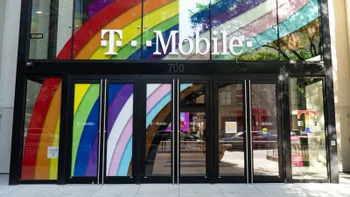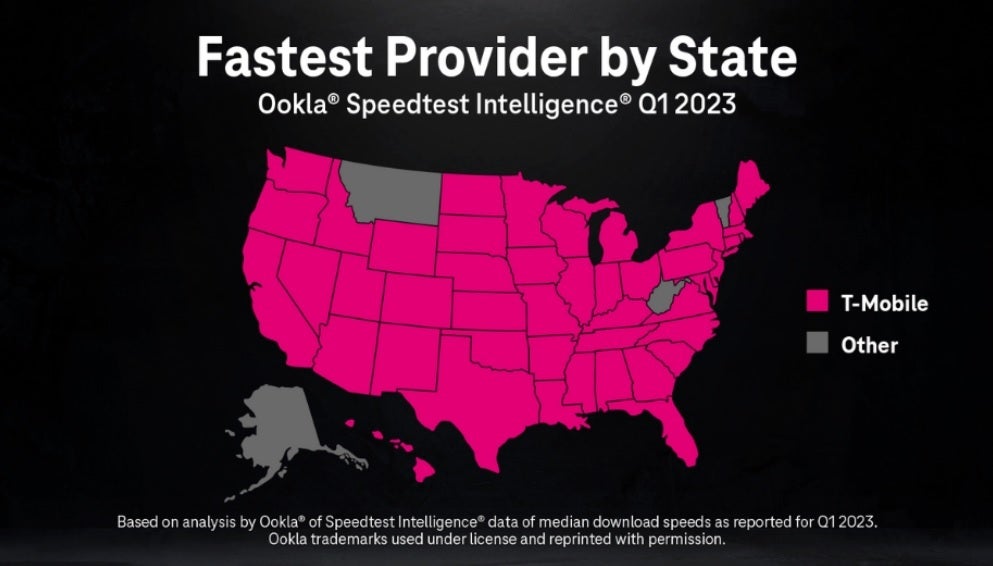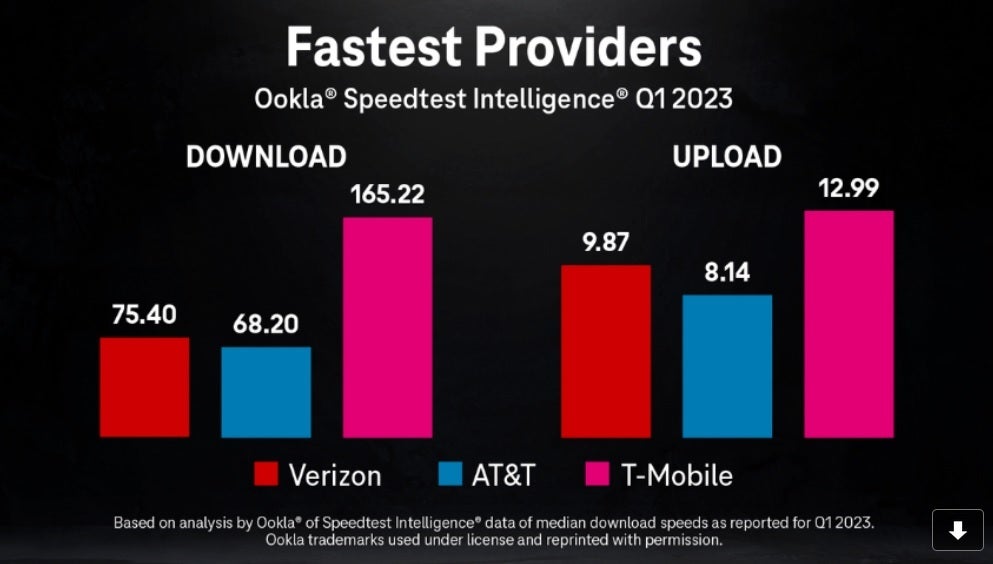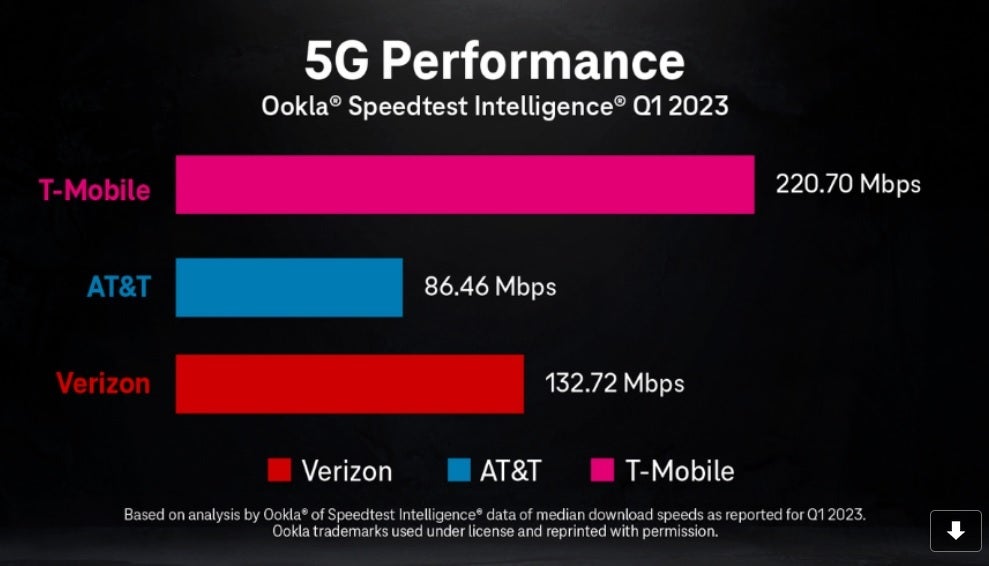Ookla's first quarter U.S. wireless report shows complete domination by T-Mobile

Ookla, the company that gives us the Speedtest.net app that many use to check the download and upload data speeds on their devices, has announced that based on its latest report covering the first quarter, T-Mobile is the fastest mobile operator in the U.S. with a median download speed of 165.22 Mbps. That is twice as fast as Verizon and AT&T.
T-Mobile crushes the competition in the states according to Ookla's first-quarter report
T-Mobile also had the most consistent network which means the odds are that if you're a T-Mobile subscriber, you're bound to experience faster data speeds more consistently than Verizon and AT&T customers. T-Mobile also had the highest video score rating meaning that those who love to stream videos on their mobile devices have a better experience on T-Mobile.

T-Mobile is the fastest wireless provider in 46 states
Let's dive deeper into these numbers. T-Mobile's median download data speed of 165.22 Mbps topped Verizon's 75.40 Mbps and AT&T's 68.20 Mbps. As for upload speeds, T-Mobile's median 12.99 Mbps recorded for Q1 was better than Verizon's 9.87 Mbps and the 8.14 Mbps median speed that AT&T subscribers experienced.

T-Mobile delivers the fastest median download and upload wireless data speeds in the U.S.
Consistency results show the percentage of times that a carrier had a download speed of at least 5 Mbps and an upload speed of 1 Mbps. T-Mobile led here too with a consistency rate of 87.3% compared to 83.5% for Verizon and 81.6% for AT&T. There was more of a battle for video score as T-Mobile's 74.25 score just beat out Verizon's tally of 72.28. AT&T was third with a score of 68.02.

T-Mobile also leads in U.S. 5G performance
How about 5G? It seems that T-Mobile's 2.5GHz mid-band spectrum is the hero here as the carrier had a median 5G download data speed of 220.70 Mbps compared to 132.72 Mbps for Verizon and 86.46 Mbps for AT&T. T-Mobile also had the top score for 5G availability which measures the percentage of times that customers with a 5G capable device spend the majority of their time, roaming and on-network, connected to a 5G signal.
The scoring for 5G availability was 71.1% for T-Mobile, 68.7% for AT&T, and a disappointing 37.6% for Verizon. 5G consistency was tight with no statistical winner according to Ookla. T-Mobile's consistency score was 77.4% compared to Verizon's 76.6% and AT&T's 68.6%. 5G video score was a tie between Verizon and T-Mobile (both scored 77.97) with AT&T in third (70.44).
Ulf Ewaldsson, President of Technology at T-Mobile, said, "We’ve gone from being the leading 5G network to establishing ourselves as the overall network leader in an incredibly short amount of time. We’ve taken our network to the top while also providing customers with unbeatable value, without making any compromises, and we still have more up our sleeve."
T-Mobile's 5G signals cover more Americans than Verizon and AT&T combined
T-Mobile's 5G signals cover 325 million Americans which is more than AT&T and Verizon combined. T-Mobile's faster Ultra Capacity 5G, which uses both 2.5GHz mid-band signals and high-band mmWave signals, covers 265 million Americans with plans to expand that to 300 million people this year. The results show that T-Mobile, which built out its 5G network using the 2.5GHz mid-band spectrum it acquired in the Sprint acquisition, did the right thing compared to Verizon and AT&T.
While Verizon and AT&T started work on their 5G networks by trying to dazzle consumers with the extremely fast speeds delivered by mmWave high-band spectrum, they failed to consider how limited those signals are in terms of distance making them nearly impossible to access. Additionally, mmWave signals can be blocked by trees, buildings, etc. The mid-band spectrum that T-Mobile focused on isn't as fast as mmWave, but it travels longer distances and isn't blocked by trees and tall buildings.
The decision by T-Mobile to build its 5G network around mid-band signals is probably the reason why the carrier dominates the performance charts today. By the time Verizon and AT&T started throwing money at C-band auctions in order to grab some mid-band spectrum of its own, T-Mobile had become the early 5G leader in the U.S.










Things that are NOT allowed: